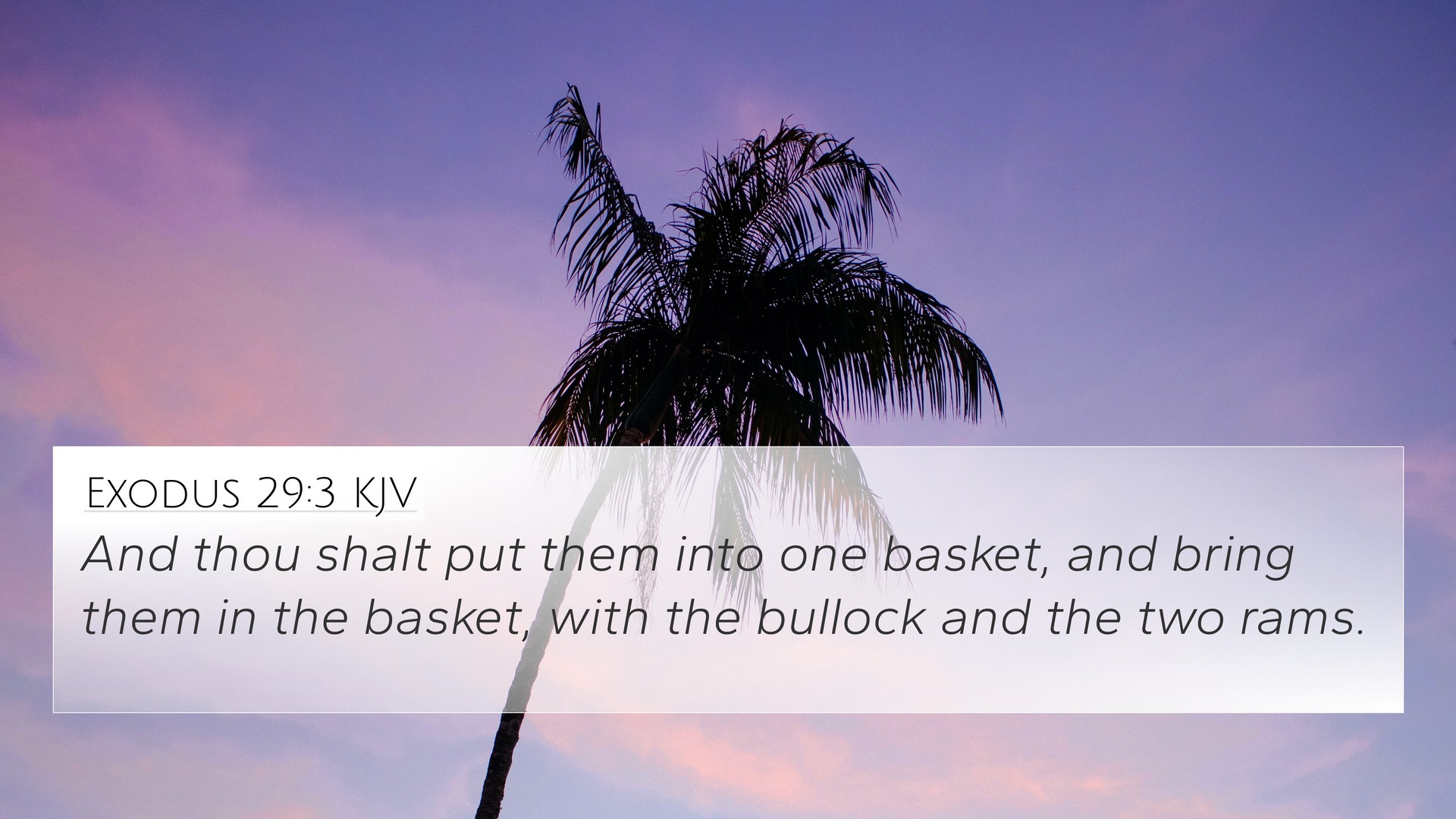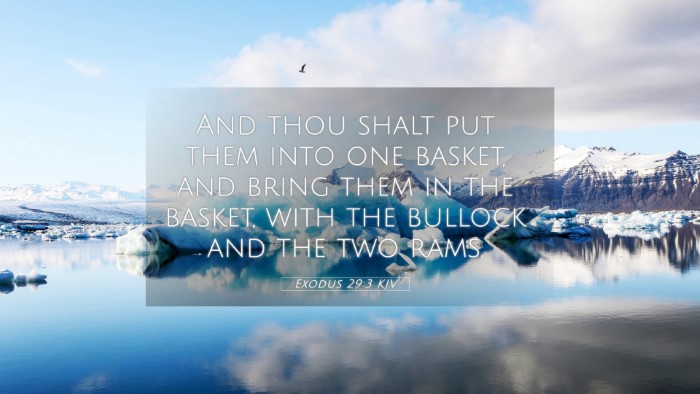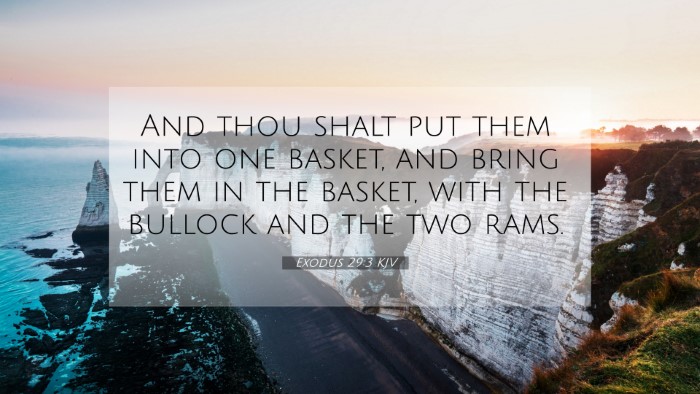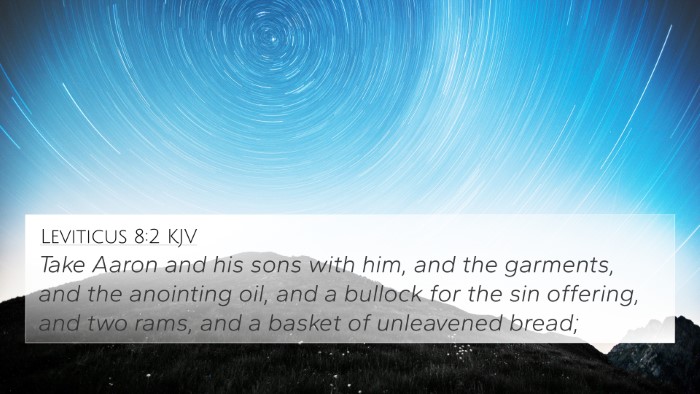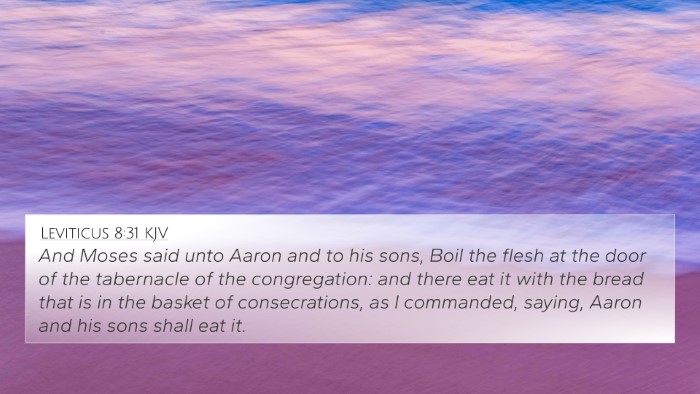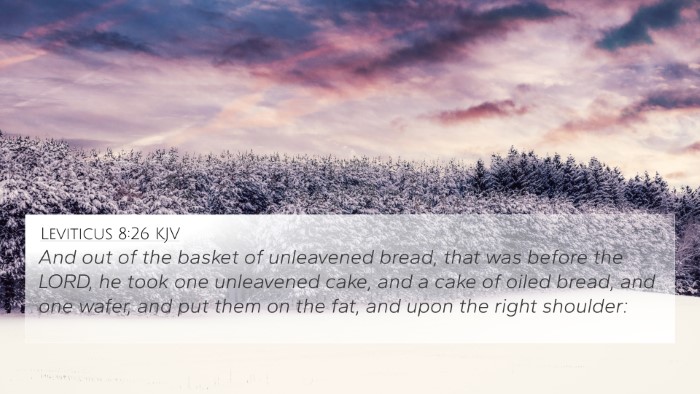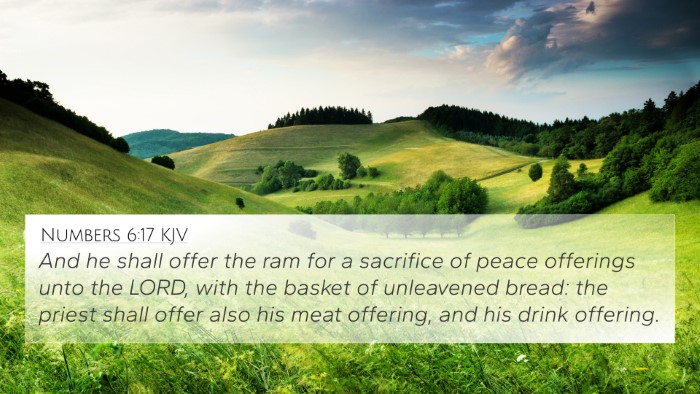Understanding Exodus 29:3
Verse: "And you shall put them into the hand of Aaron and into the hand of his sons, and you shall present them as a wave offering before the LORD." (Exodus 29:3)
Overview
This verse describes a ceremonial act involving the priests, specifically Aaron and his sons, highlighting the sanctification process of the priesthood. The act of presenting offerings to God signifies their dedication and service to Him.
Commentary Insights
-
Matthew Henry:
Henry emphasizes the significance of offerings as a means of acknowledging God's sovereignty and grace. The wave offering represented a gift presented to God, symbolizing the priests' role as mediators between God and the people.
-
Albert Barnes:
Barnes focuses on the ritual nature of the offerings and their symbolic importance. He notes that the wave offering was not merely a physical action but a reflection of the internal attitude of reverence and gratitude towards God.
-
Adam Clarke:
Clarke points out that the act of placing the offerings in the hands of Aaron and his sons signifies the transmission of responsibility and consecration. The wave offering highlights the need for both the priests and the offerings to be pure and dedicated to God’s service.
Significance of the Wave Offering
The wave offering, as mentioned in Exodus 29:3, served multiple purposes:
- Dedication: It symbolized the total dedication of the priesthood to God.
- Communion: It represented the communion between God and His people through the priests.
- Symbolism: The act itself was a ritual that communicated the offering’s acceptance before God.
Cross-References
Exodus 29:3 is interconnected with several other scripture passages that enhance understanding:
- Leviticus 7:30: Discusses the wave offering further, emphasizing its role in the sacrificial system.
- Numbers 18:28: Illustrates the portion given to the priests, similar to the offerings presented.
- Hebrews 5:1: Connects the Old Testament priesthood to the New Testament understanding of priesthood in Christ.
- 1 Peter 2:5: Mentions that believers are a royal priesthood, linking back to the priestly functions described in Exodus.
- Exodus 28:41: Provides insight into the consecration of the priests and the garments they wore during their service.
- Leviticus 8:27-29: Details the sanctification process of the priests, affirming the significance of offerings.
- Romans 12:1: Even in the New Testament, the idea of presenting oneself as a living sacrifice parallels the offerings described in Exodus.
Thematic Connections
Exodus 29:3 offers significant thematic connections to various Bible teachings:
- Consecration: The necessity for holiness in priestly functions, underlining the idea that God’s servants must be set apart.
- Offerings and Sacrifice: Reinforces the concept of giving in worship; both in the Old and New Testament contexts.
- Intercessory Role: Highlights the role of priests as intermediaries, a theme that plays a significant part throughout scripture.
Conclusion
Exodus 29:3 serves as a critical link in understanding the sacrificial system of the Old Testament. Through the insights provided by Matthew Henry, Albert Barnes, and Adam Clarke, readers can gain a deeper appreciation for the historical and theological importance of the wave offering. It also invites further exploration through cross-references that connect this verse with the broader narrative of scripture, notably the themes of consecration, sacrifice, and intercession.
